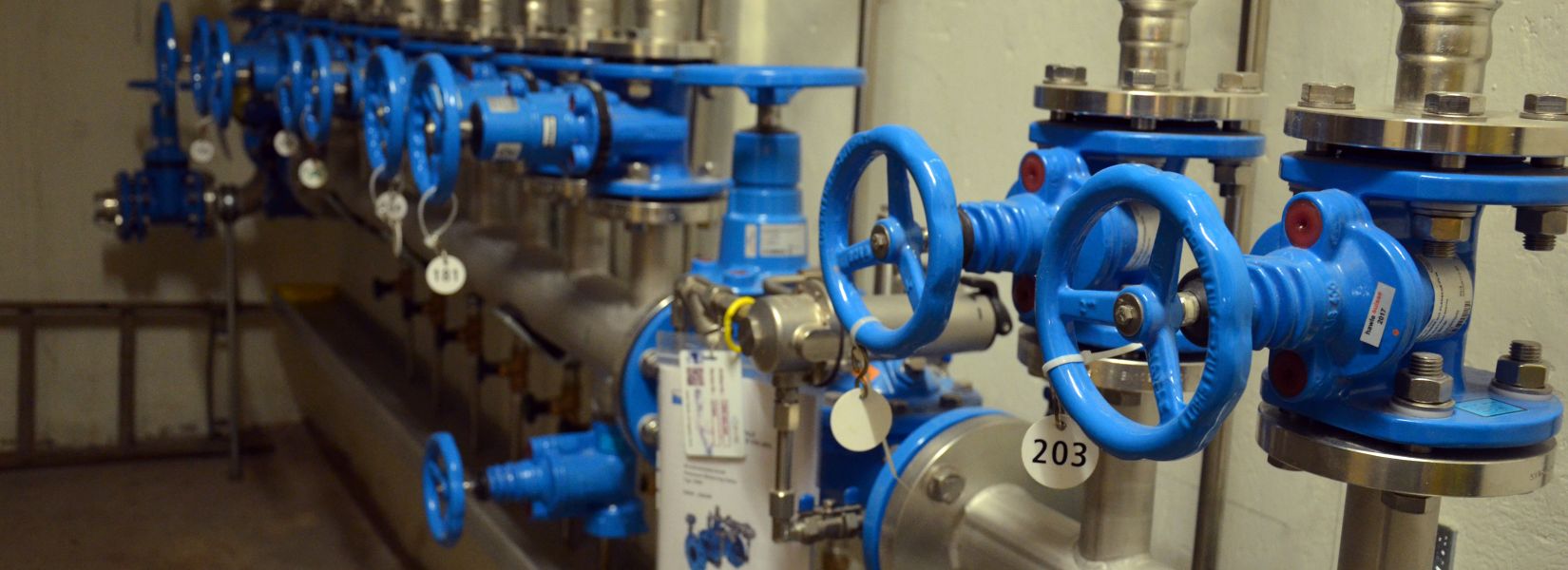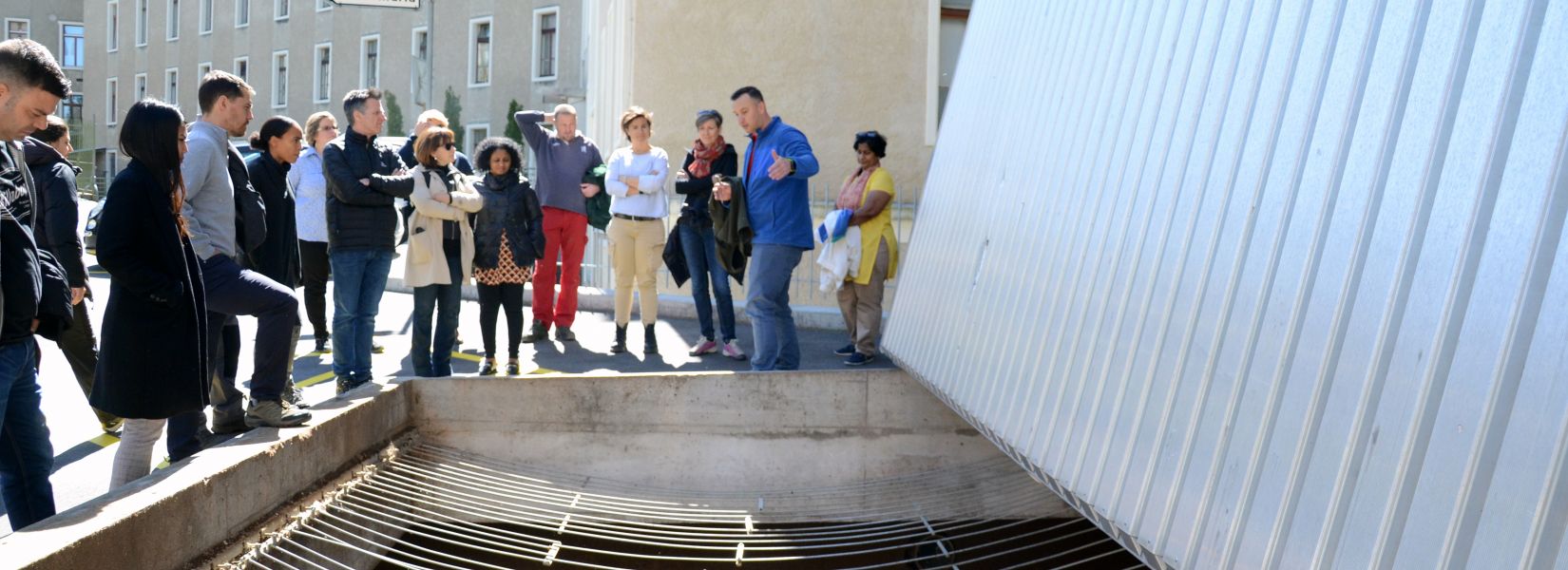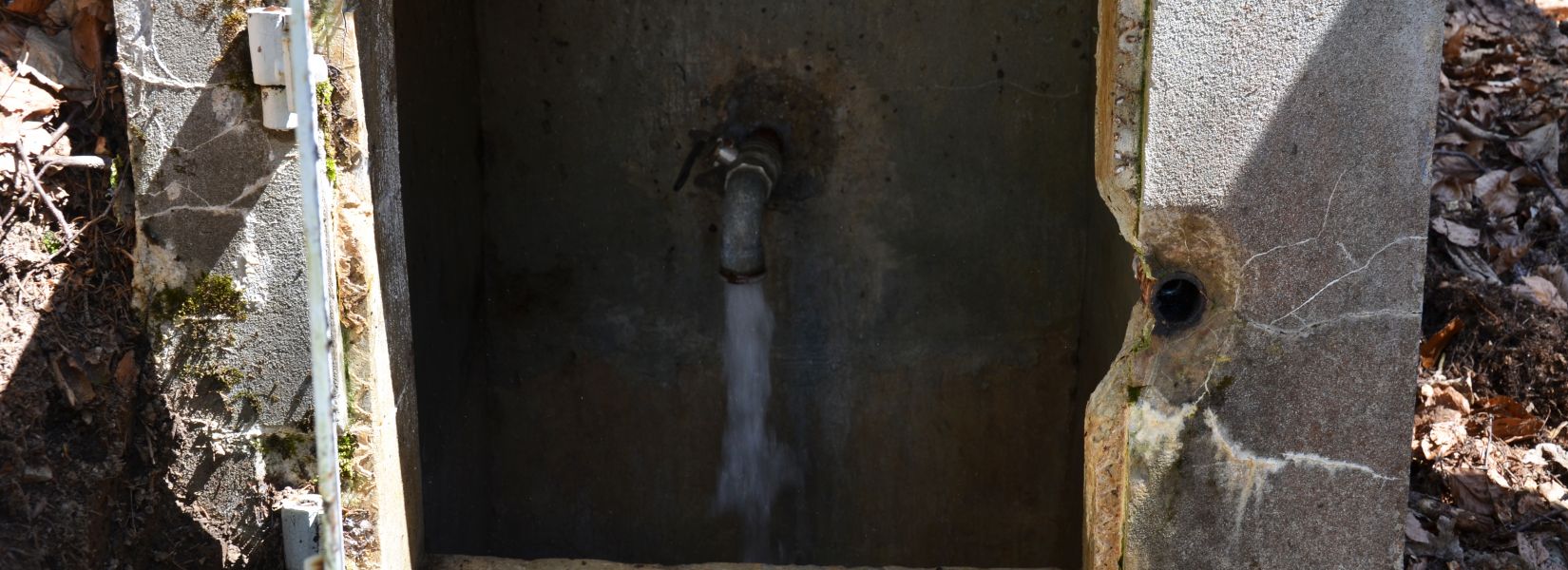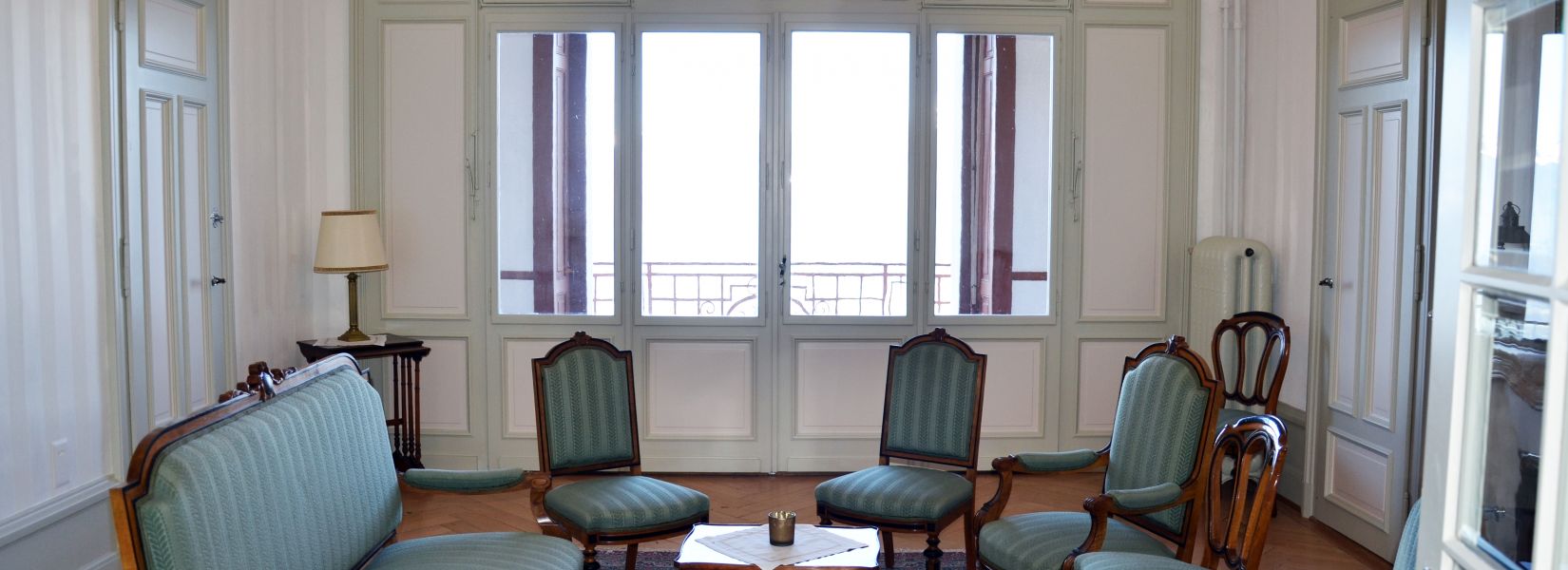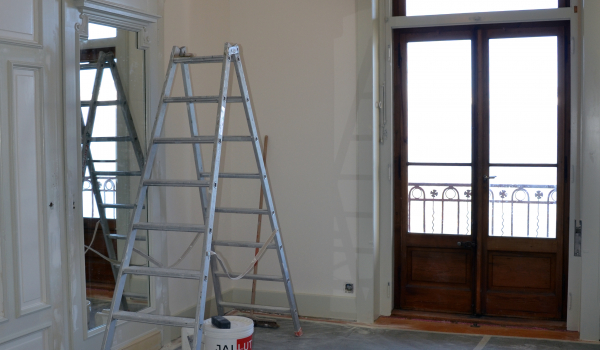Behind the scenes at the Caux Palace - meticulous work
By Sabrina Thalmann, Communications Officer, IofC Switzerland
11/06/2019
Whether it’s your first, second or hundredth visit to the Caux Palace you can’t help but be in awe of the stunning view over Lake Geneva and the surrounding mountains. You can’t help but look with wonder at the grandeur and beauty of the 1902 Grand Hotel. As soon as you venture into the Palace’s long corridors and wander into some of its 220 rooms, you discover new details such as a ceiling cornice, an imposing golden chandelier, an ornament on a period piece or a fleur-de-lis on a tile. You’d never imagine the enormity of the meticulous restoration and maintenance that takes place on a daily basis lying behind every corner of the building. I had the chance to discover what goes on behind the scenes during an IofC Switzerland team outing.
“It’s time consuming work,” explains proudly Adrien Giovannelli who is in charge of the buildings, grounds and forests, while showing us a room his team has recently renovated. “The rooms are protected as part of the Palace’s historic monument status which means we have to ensure our work is of the highest quality.”
Six weeks are sometimes necessary to renovate a room in the style of the Belle Epoque. For example, the original bathtubs have to be removed from the rooms, re-enamelled and re-fitted. Renovating the parquet floors, painting the walls, repairing the period tiling, draft proofing the windows, fitting shower cubicles, replacing tiles and varnishing the doors are just some of the numerous daily tasks performed by Jérôme, Daniel, Angelo, Bernard and Adrien.
Various trades
For the last 30 years, Daniel, the Foundation’s cabinetmaker has given the wooden period furniture special attention. He works on it with passion and care. In his workshop he shows us the machines, some of which have been there since the 90s, that breathe new life into the furniture. It’s at this point that I discover that the mouldings which I so admire are the result of a complex process. A small tool stamped with the pattern is used to grind a model in iron, then to redo the wood in order to reproduce the moulding. It’s meticulous and skilled work.
Outside, Angelo, the general technician, can’t hide his enthusiasm as he explains to me how the wood-fired boiler installed in 2015 works. “A lorry leaves the wood directly in the silo. Then a rotating screw feeds the boiler with blocks of wood depending on demand.” The boiler which provides heating for the Caux Palace, the Villa Maria and the Lectorium, has enabled the Foundation to reduce its carbon footprint by saving roughly 600 tonnes of CO2 from fossil fuels per year.
To finish this trip behind the scenes at the Caux Palace, we’re given the chance to visit the springs which supply the Conference centre and some of the neighbouring buildings. In this water catchment there are two reservoirs of 200,000 litres belonging to the Foundation which are supplied directly with water from the mountain.
It’s up to Pascal to look after the water catchment area as well as the gardens for the conference centre. The landscape gardener enthusiastically explains the potential of the Caux Palace grounds. He envisages a future where there are mini-gardens (for example, English and Japanese) for visitors to enjoy. To start with he has given himself the task of highlighting the view of the lake and laying the foundations for a revitalised exterior.
The next time I visit Caux Palace and admire the view from my bedroom balcony, I’ll think about all this hidden but essential work to ensure the beauty of the place.
Would you too like to contribute to the up-keep of the Caux Conference and Seminar Centre? To support this important work, donate here.
